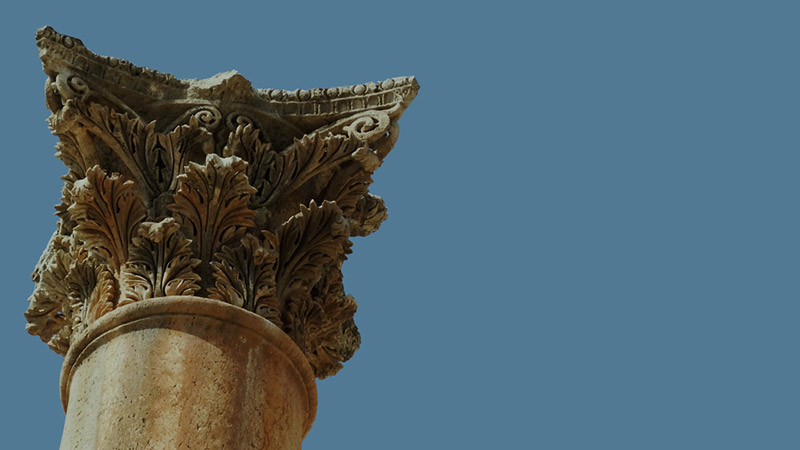Select Marker to See Location Name
You Searched "Temple Mount, Jerusalem, Israel"
-
Devotional
A Beautiful Temple
-
Volume 6
Lesson 6.4 | Living Stones
-
Volume 9
Lesson 9.4 | The Mountain of God
- LOAD MORE
- SHOW ALL
Updating...
Devotional |
A Beautiful Temple |
Volume 6 |
Lesson 6.4 | Living Stones |
Volume 9 |
Lesson 9.4 | The Mountain of God |
Showing 12 of 420

Korazin - The CityStudying the ruins of Korazin and other Galilean towns, scholars have pieced together a picture of family life in the first century. Korazin stood in the northwestern corner of the Galilee region, about three miles from the sea. ...
MORE
Not on Bread AloneIsrael is mostly rugged desert. The variety of Hebrew words for desert or wilderness indicates the significant role the landscape played in biblical history and imagery. For the Hebrews, the desert was far more formative than the...
MORE
In Revelation 2:25, the apostle John condemns those who follow the teachings of Balaam and the Nicolaitians. Balaam is known for his role in encouraging the Israelites to participate in the feasts and sexual immorality of the Canaanite idols, whic...
MORE
Olive trees rarely reach 20 feet high. This ancient tree, with is gnarled trunk, is still very productive after 100 or more years of bearing olives. The root system of olive trees spreads wide to obtain the necessary moisture in Israel's relativel...
MORE
Olive oil was highly valued by the people of first-century Israel. They used it in food preparation and preservation, in medicine, and in cosmetics. Olive oil was also used to lubricate wheels and hinges. Its most important use, however, was proba...
MORE
Olive oil was a significant part of the daily lives of the Israelites in the first century. It was eaten in or with other food, used for skin care, used to fuel lamps, taken as medicine, and widely used in trade. It may also have been used as a lu...
MORE
The olive tree is known for its beauty (Hosea 14:6) partially because its large ancient trunk often has the look of a productive past. Furthermore, one side of the tree's leaves are light green and the other, a much lighter green, give the leaves ...
MORE
Title borne by a city which possessed a temple dedicated to the imperial cult.
MORE
During and after Jesus' time, the city expanded north, and many wealthy people built large villas in this new area of Jerusalem. Herod Agrippa walled it about thirty or more years after Jesus? crucifixion.
MORE
The Antonia fortress was located here. Built by Herod the Great, this fortress guarded the northern side of Jerusalem and held Roman troops during Jesus' time who watched the temple activities. Paul was probably brought to the Antonia after his ar...
MORE
When Israel divided after Solomon's death (926 BC), the northern 10 tribes under Jeroboam became the northern kingdom, or Israel. The Assyrians destroyed them in 722 BC.
MORE